Japanese Akoya vs. Chinese Freshwater Pearls Comparison

Welcome to our comprehensive comparison of Japanese Akoya pearls and Chinese Freshwater pearls, two exquisite gems that have long captured the hearts of enthusiasts worldwide.
The allure of pearls transcends time and trends, yet the age-old dilemma of choosing between Akoya and Freshwater pearls persists.
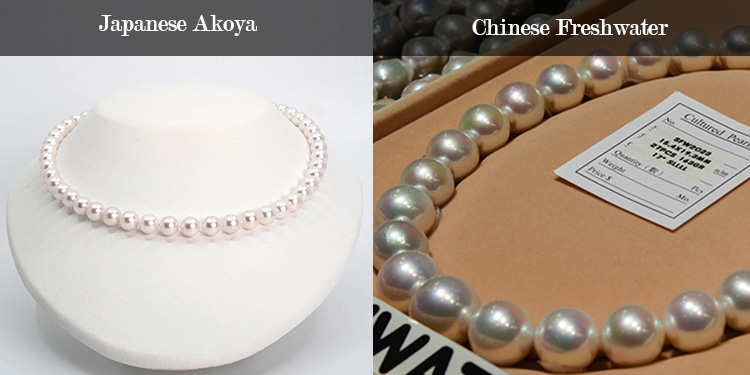
This article aims to illuminate this timeless conundrum, equipping you with the knowledge and insights needed to make an informed choice.
As we delve into the nuances of origin, quality, and value, we hope to provide you with a clear understanding of these magnificent pearls, ultimately helping you select the perfect pearls to adorn your life's special moments.
Pearl Structure: Saltwater vs. Freshwater Pearls
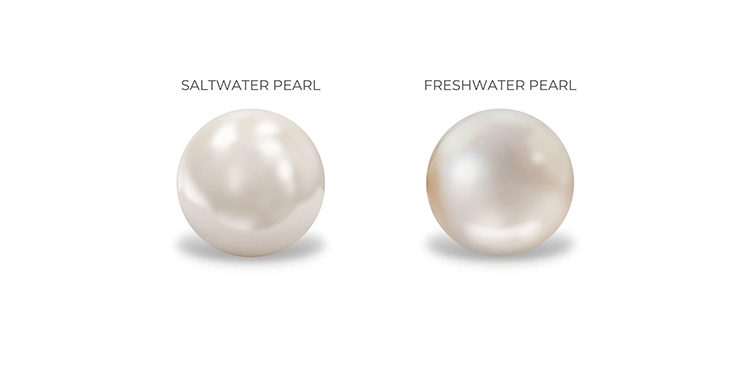
In the enchanting realm of pearls, the origin of these gems plays a pivotal role in shaping their structure and characteristics.
The differences are intriguing and distinctive when comparing the pearl structure of Akoya pearls, sourced from saltwater and Freshwater pearls.
Akoya Pearls
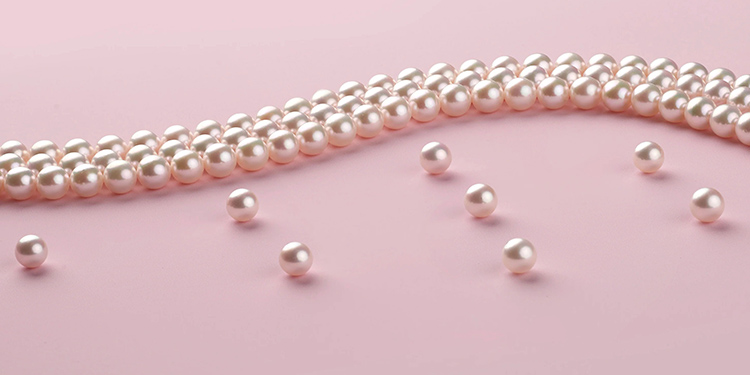
A meticulous bead nucleation process is at the heart of an Akoya pearl's formation.
This process involves the surgical insertion of a perfectly round nucleus, often a polished bead or mother-of-pearl, into the oyster or mussel.
This surgical precision results in pearls that exhibit a near-perfect spherical shape, boasting sharp luster and a remarkable ability to match one another in size and appearance.
The round nucleus catalyses the deposition of layers of nacre, lending Akoya pearls their signature elegance.
To maintain the pristine allure of Akoya pearls, they require delicate care. Avoid exposure to harsh chemicals, perfumes, and excessive sunlight.
Regular cleaning with a soft cloth is recommended to preserve their radiant sheen.
Freshwater Pearls
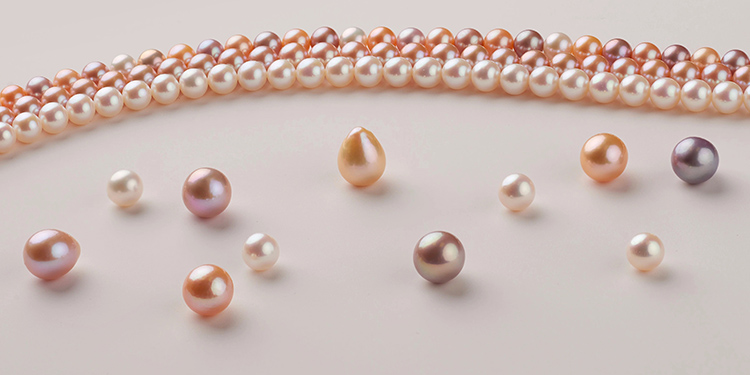
Conversely, Freshwater pearls are cultivated through tissue nucleation. Small mantle tissue pieces from a donor mussel are inserted into the recipient mussel's mantle tissue.
Over time, these tissue pieces stimulate the secretion of nacre, gradually forming layers around the tissue.
One of the remarkable attributes of Freshwater pearls is their durability and solid crystalline nacre, which imparts resilience and an evolving array of shapes and sizes.
Pearl Shapes - Perfect Round vs. Varied Shapes
When exploring the world of pearls, one of the first distinctions that captivate enthusiasts is the mesmerising array of shapes they come in.
Let's embark on a journey to compare the captivating realm of pearl shapes, explicitly focusing on Akoya and Freshwater pearls.
In the realm of Akoya pearls, precision is the hallmark. These Japanese gems are renowned for their exquisite, perfectly round shapes.
Each Akoya pearl is meticulously cultivated carefully, creating an elegant and timeless uniform.
However, a rare and intriguing category exists amidst the pursuit of perfection – the baroque Akoya pearls.
These distinctive outliers embrace irregularity, celebrating the allure of nature's whim.
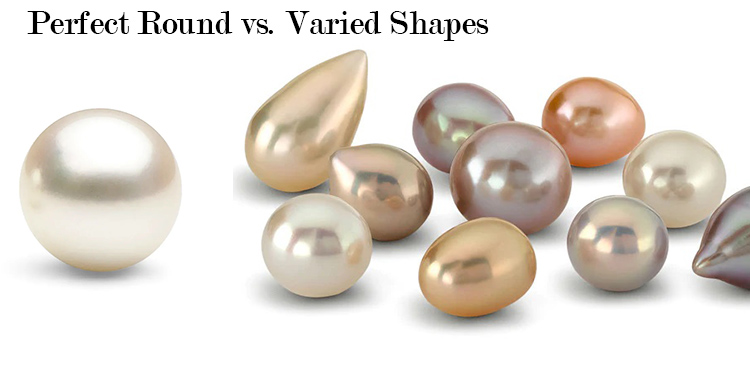
Freshwater pearls exhibit a diverse and evolving spectrum of shapes on the contrasting shores.
From the quaint charm of potato-shaped pearls to the gentle elegance of off-round and oval variants, Freshwater pearls have historically exhibited variety.
Yet, the modern era has evolved towards more refined, round shapes, partly influenced by innovations in pearl farming techniques.
The shape of a pearl within the Freshwater category is also influenced by its grade.
Higher-grade Freshwater pearls tend to display rounder, more symmetrical forms, while lower-grade pearls may exhibit more significant variations in shape.
Pearl Luster - "Ball Bearing" vs. "Satin Glow"
Luster, often described as the 'ball bearing' versus 'satin glow,' plays a pivotal role in distinguishing the captivating qualities of Akoya and Freshwater pearls.
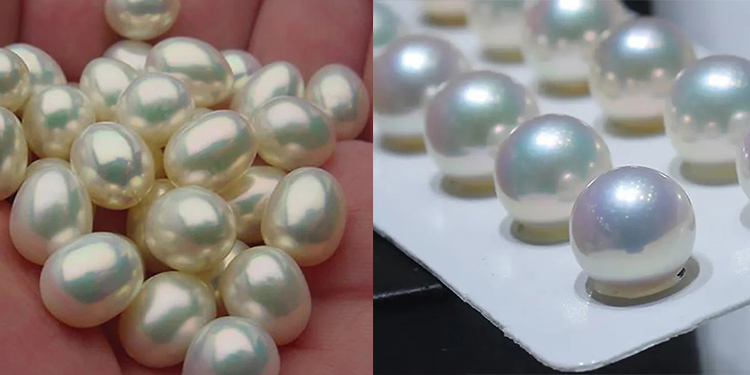
Akoya pearls, renowned for their exquisite sheen, boast a lustre akin to polished ball bearings.
This unique trait stems from their distinct nacre composition, comprising aragonite platelets that are exceptionally uniform in size and alignment.
The result? High reflectivity and a mirror-like shine that accentuates their surface.
This dazzling luster grants Akoya pearls an unmistakable brilliance, contributing significantly to their allure and elegance.
In contrast, Freshwater pearls exhibit a different lustre, often likened to a subtle, ethereal 'satin glow.'
This softer, diffused shine arises from the layered nacre formation within Freshwater molluscs.
Their irregularly shaped crystalline structures disperse light in a gentle, dispersed manner.
This unique lustre appeals to those who appreciate a more delicate, nuanced glow, making Freshwater pearls an excellent choice for those seeking a distinct, understated charm.
Pearl Inclusions
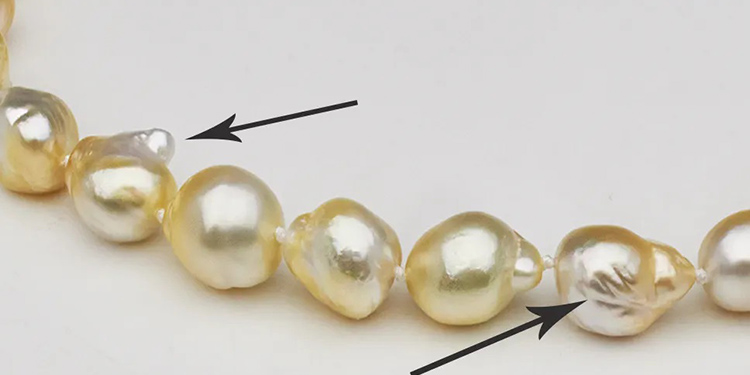
When it comes to pearls, their natural beauty can sometimes be marred by inclusions or blemishes that affect their appearance and value.
Let's explore the standard inclusions found in Akoya and Freshwater pearls.
Akoya Pearls
1. Pin Prick Blemishes: These tiny, often microscopic, dots are among the most common inclusions in Akoya pearls.
They are usually caused by minute foreign particles trapped during the pearl's growth.
2. Conchiolin Buildup: Conchiolin is a substance that forms the pearl's layers.
Sometimes, excess conchiolin can accumulate in small pockets, appearing as white or yellowish spots on the pearl's surface.
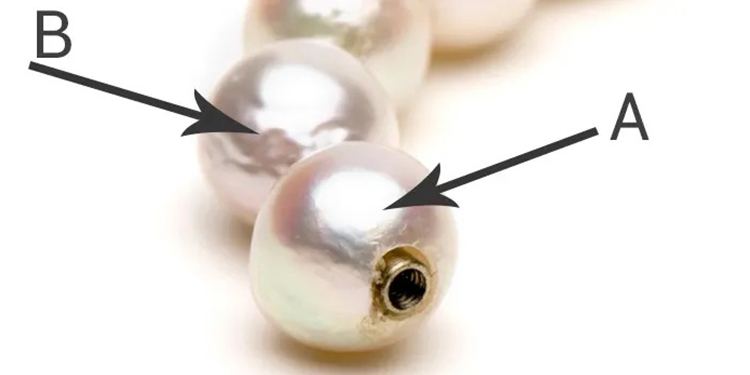
3. Wrinkles: Wrinkles are fine lines or creases that can occur on an Akoya pearl's surface.
They may be a result of irregular growth conditions or environmental factors.
The visibility and impact of these inclusions in Akoya pearls can vary. Pinprick blemishes and conchiolin buildup are often quite subtle.
They may not significantly affect the pearl's overall beauty, while wrinkles can be more noticeable, especially deep or extensive.
Freshwater Pearls
1. Dull White Spots: Freshwater pearls are known for their unique appearance, including a "rice crispy" texture.
Dull white spots, resembling rice grains, are a standard inclusion found in these pearls.
They are usually the result of calcium carbonate deposits.
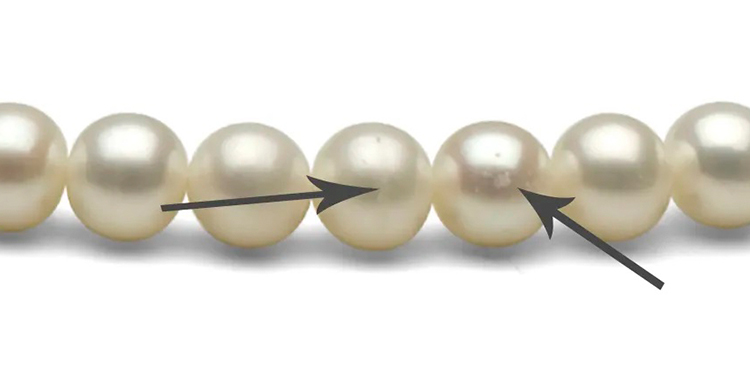
2. Subtle Ridges:
Freshwater pearls may also exhibit subtle ridges or wrinkles on their surface, similar to those in Akoya pearls.
These can be a natural part of the pearl's growth process.
Regarding size, visibility, and impact, the inclusions in Freshwater pearls, such as dull white spots and subtle ridges, tend to be more prominent than those in Akoya pearls.
However, their impact on the pearl's overall beauty can still vary.
Some may find these inclusions enhance the pearl's organic charm, while others prefer a smoother, more flawless surface.
Pricing Issues - Why the Big Jump?

The significant pricing disparity between Akoya and Freshwater pearls raises intriguing questions for enthusiasts.
When comparing these gems, one can find a broad range of prices. Several factors contribute to this divergence.
Firstly, rarity plays a pivotal role, as Akoya pearls are scarcer due to their limited production than the abundant Freshwater pearls.
Secondly, the valuation of attributes such as quality, luster, and shape significantly impacts prices.
The permaculture techniques and the inherent difficulty in cultivating Akoya pearls also contribute to their higher cost.
Understanding these factors is crucial for those seeking the perfect pearls that align with their budget and preferences.
Decision Time - An Expert's Thoughts

Decision time is at hand when choosing between Japanese Akoya and Chinese Freshwater pearls.
Here, we summarise the crucial factors for your pearl selection.
They are your go-to option if you prioritise the traditional lustre and renowned quality of Akoya pearls and have a flexible budget.
Conversely, if budget constraints weigh heavily and you appreciate variety in shapes and colours, Freshwater pearls offer a compelling alternative.
In the end, it boils down to your preferences and budget.
As experts in the field, we advise considering what matters most to you, ensuring that your pearl choice aligns perfectly with your desires and financial considerations.
Conclusion
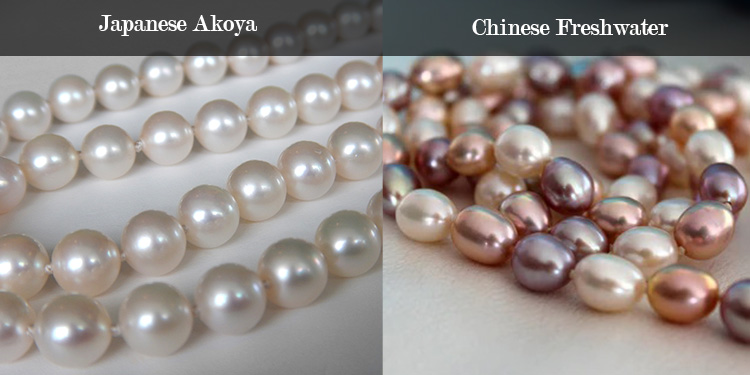
The choice between Japanese Akoya pearls and Chinese Freshwater pearls is a captivating journey through the world of pearls.
Each variety possesses unique characteristics, from Akoya's precision and lustre to Freshwater's diversity and affordability.
The decision ultimately hinges on your personal preferences and budget.
Whether you seek Akoya's classic elegance or Freshwater pearls' versatility, understanding their origins, shapes, lustre, and inclusions empowers you to make an informed choice.
Whichever path you choose, remember that both varieties offer the timeless beauty of pearls, ready to grace your special moments with their enduring charm and elegance.


Leave a Comment